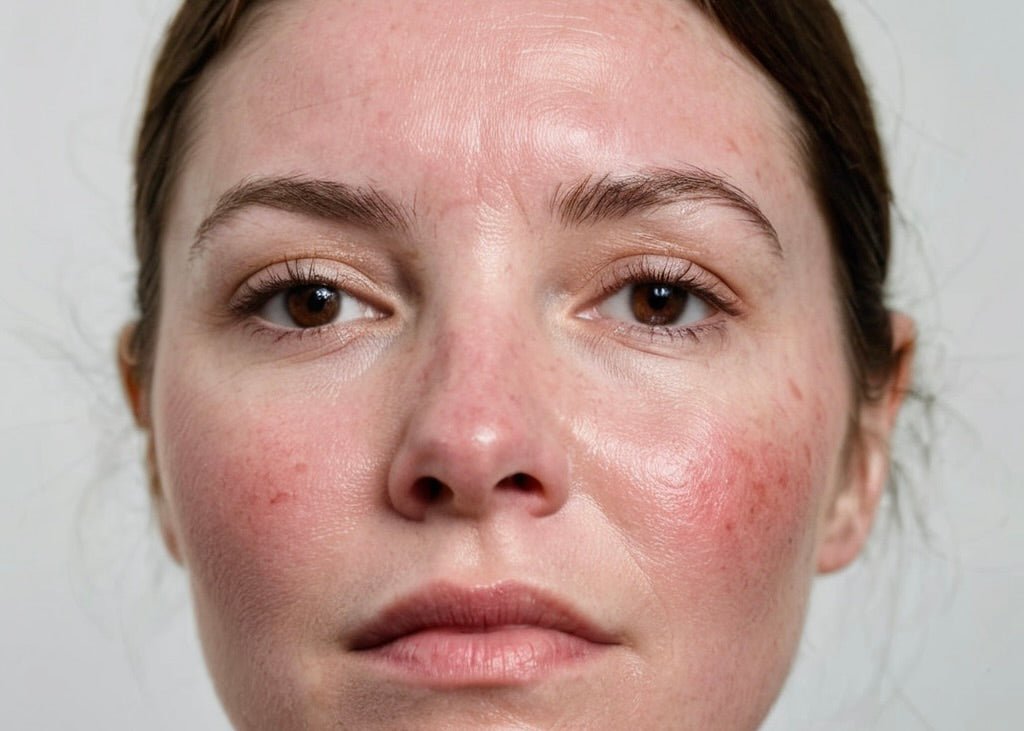
Salicylic Acid for Skin Redness: Does It Work?
When it comes to skincare, the sheer number of ingredients and products available can be overwhelming. One ingredient that has been gaining popularity for its potential benefits is salicylic acid. But does it really work for skin redness? Let's explore this in detail.
Understanding Salicylic Acid
Salicylic acid is a type of beta hydroxy acid (BHA) that is often used in skincare products. It is derived from willow bark, a natural and sustainable source, making it an eco-friendly choice for your skincare routine.
Salicylic acid is known for its ability to penetrate deep into the pores of the skin. It works by dissolving the debris that clogs pores and causes acne, making it an effective treatment for various skin conditions. But what about skin redness? Let's delve deeper into this.
The Science Behind Salicylic Acid and Skin Redness
Salicylic acid has anti-inflammatory properties, which can help to reduce redness and inflammation in the skin. It works by reducing the production of certain chemicals in the skin that cause inflammation and redness.
Furthermore, salicylic acid can exfoliate the skin, removing dead skin cells and promoting the growth of new ones. This can help to improve the overall appearance of the skin, reducing redness and giving the skin a more even tone.
How to Use Salicylic Acid for Skin Redness
Using salicylic acid for skin redness is relatively straightforward. However, it's important to remember that everyone's skin is different, and what works for one person may not work for another.
Here are some steps to incorporate salicylic acid into your skincare routine:
- Start by choosing a product that contains salicylic acid. This could be a cleanser, toner, or serum.
- Apply the product to a small area of skin first to test for any adverse reactions.
- If there are no adverse reactions, you can start applying the product to the affected areas of your skin.
- It's important to use the product consistently for the best results. However, if your skin becomes dry or irritated, you may need to reduce the frequency of use.
Remember, it's always a good idea to consult with a dermatologist before starting any new skincare regimen.
Potential Side Effects of Salicylic Acid
While salicylic acid can be beneficial for reducing skin redness, it's not without potential side effects. Some people may experience dryness, peeling, or irritation, especially if they have sensitive skin.
It's also worth noting that salicylic acid can make your skin more sensitive to the sun. Therefore, it's important to wear sunscreen when using products that contain this ingredient.
How to Minimize Side Effects
If you're concerned about potential side effects, there are steps you can take to minimize them:
- Start with a lower concentration of salicylic acid and gradually increase it as your skin becomes accustomed to the ingredient.
- Use a moisturizer to combat any dryness or peeling.
- Always wear sunscreen to protect your skin from the sun.
Again, it's always best to consult with a dermatologist if you have any concerns.
Conclusion
So, does salicylic acid work for skin redness? The answer is yes, it can. Its anti-inflammatory properties can help to reduce redness and inflammation, and its exfoliating properties can improve the overall appearance of the skin.
However, it's important to use salicylic acid correctly and be aware of potential side effects. As always, it's best to consult with a dermatologist before starting any new skincare regimen.
Remember, skincare is a journey, not a destination. It may take time to see results, but with patience and consistency, you can achieve healthier, more radiant skin.














